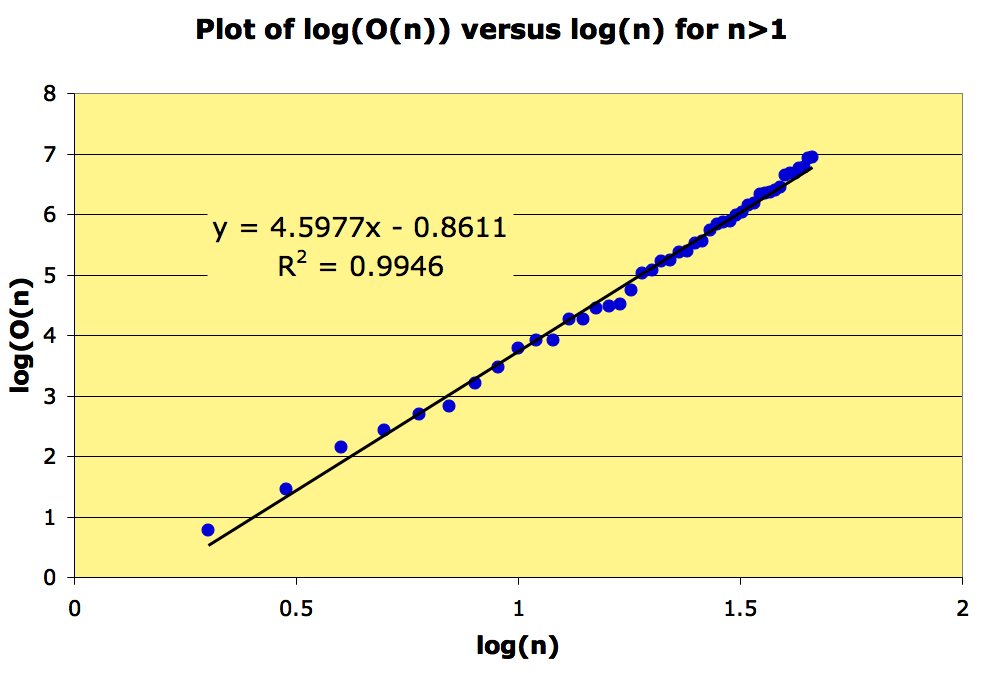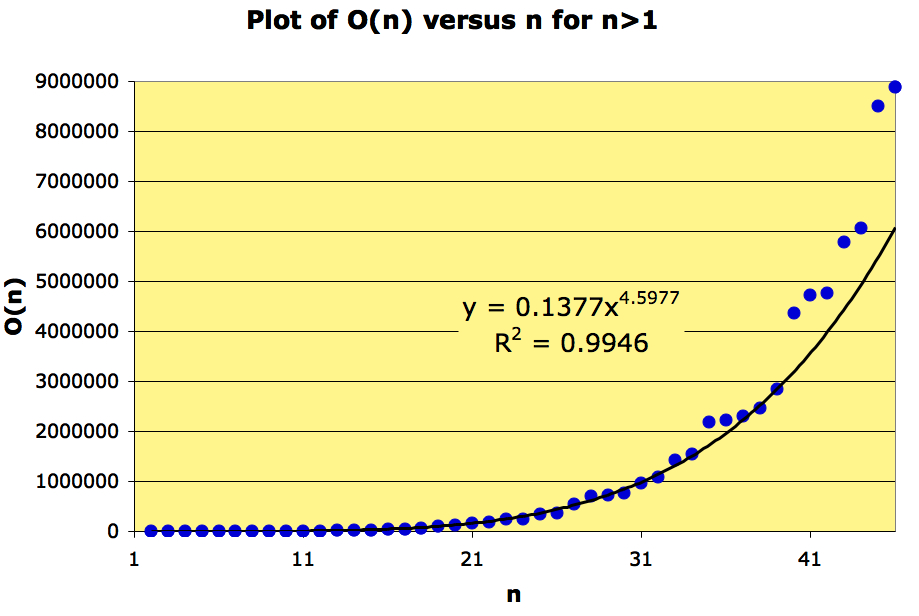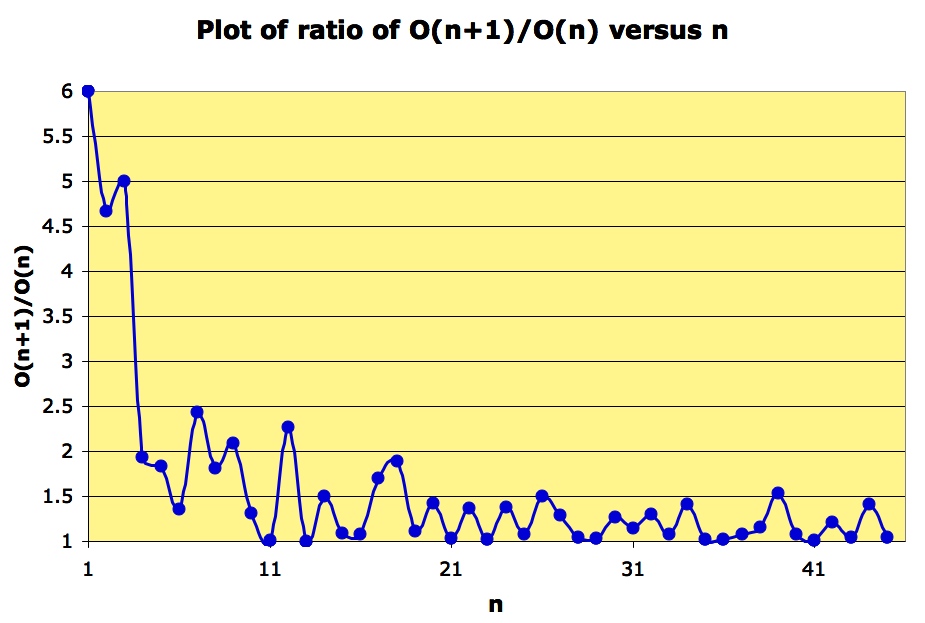Ore numbers: how do they grow?
Posted by: Gary Ernest Davis on: November 15, 2010
An Ore number (also known as a harmonic divisor number) is a number whose harmonic mean of its divisors is an integer.
The harmonic mean of a set of numbers is
.
When the are the whole number divisors of the number n, then we get the harmonic mean of the divisors of n.
These numbers were named for Øystein Ore who proved that all perfect numbers are Ore numbers. Recall a whole number is perfect if the sum of the divisors of the number is exactly twice the number. 6 and 28 are well-known perfect numbers.
For example, the divisors of 3 are 1 and 3, so the harmonic mean of these divisors is which is not an integer, so 3 is not an Ore number.
More generally, if is a prime number then the harmonic mean of its divisors is
which is not an integer, so no prime number is an Ore number.
On the other hand, the divisors of 6 are 1, 2, 3 and 6 so the harmonic mean of these divisors is so 6 is an Ore number.
Using a computational language such as Maple, Mathematica, MATLAB or Python one can calculate a few Ore numbers.
Here is a list of the Ore numbers up to 10,000,000:
1, 6, 28, 140, 270, 496, 672, 1638, 2970, 6200, 8128, 8190, 18600, 18620, 27846, 30240, 32760, 55860, 105664, 117800, 167400, 173600, 237510, 242060, 332640, 360360, 539400, 695520, 726180, 753480, 950976, 1089270, 1421280, 1539720, 2178540, 2229500, 2290260, 2457000, 2845800, 4358600, 4713984, 4754880.
How fast do these Ore numbers grow?
Let’s write for the
Ore number.
So, and so on.
What does a plot of versus
look like?
A regression indicates that grows as a power of n, at least in the range
A plot of should therefore look like a straight line, and it does:
 This suggest that there are constant
This suggest that there are constant such that as n increases,
.
If this is so, then .
From the data we have for the Ore numbers less than 10000000 the plot of looks as follows:
So, does ?
This is a weaker question than: “is for some constants
“.
Postscript
- There is a Facebook page for Ore numbers.
- Here are the Ore numbers up to 1 billion ( = 1,000 million):
1, 6, 28, 140, 270, 496, 672, 1638, 2970, 6200, 8128, 8190, 18600, 18620, 27846, 30240, 32760, 55860, 105664, 117800, 167400, 173600, 237510, 242060, 332640, 360360, 539400, 695520, 726180, 753480, 950976, 1089270, 1421280, 1539720, 2178540, 2229500, 2290260, 2457000, 2845800, 4358600, 4713984, 4754880, 5772200, 6051500, 8506400, 8872200, 11981970, 14303520, 15495480, 16166592, 17428320, 18154500, 23088800, 23569920, 23963940, 27027000, 29410290, 32997888, 33550336, 37035180, 44660070, 45532800, 46683000, 50401728, 52141320, 56511000, 69266400, 71253000, 75038600, 80832960, 81695250, 90409410, 108421632, 110583200, 115048440, 115462620, 137891520, 142990848, 144963000, 163390500, 164989440, 191711520, 221557248, 233103780, 255428096, 287425800, 300154400, 301953024, 318177800, 318729600, 326781000, 400851360, 407386980, 423184320, 428972544, 447828480, 459818240, 481572000, 499974930, 500860800, 513513000, 526480500, 540277920, 559903400, 623397600, 644271264, 675347400, 714954240, 758951424, 766284288, 819131040, 825120800, 886402440, 900463200, 995248800




Leave a Reply